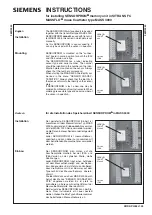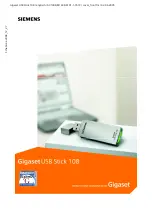
v
All equipment in the rack should force air in the same direction to avoid intake
of exhaust air.
v
Airflow requirements outlined in “Environmental requirements” on page 51
must be met.
v
The ambient air temperature does not exceed 40° C (104° F) while the switch is
operating.
Cabinet requirements
For successful installation and operation of the switch in a cabinet, ensure that the
following cabinet requirements are met:
v
The cabinet must be a standard EIA cabinet.
v
Plan for a rack space that is two rack units (2U) high; 8.90 cm (3.50 in.) high and
48.3 cm (19 in.) wide, and at least 61 cm (24 in.) deep.
v
Ground all equipment in the rack through a reliable branch circuit connection
and maintain ground at all times. Do not rely on a secondary connection to a
branch circuit, such as a power strip.
v
Ensure that airflow and temperature requirements are met on an ongoing basis.
v
Verify that the additional weight of the switch does not exceed the rack’s weight
limits or unbalance the rack in any way.
v
The cabinet must be secured to ensure stability in case of unexpected movement,
such as an earthquake.
Planning for cable management
Attention:
The minimum bend radius for a 50 micron cable is 5.1 cm (2 in.)
under full tensile load and 3.0 cm (1.2 in.) with no tensile load.
Cables can be organized and managed in a variety of ways, for example, using
cable channels on the sides of the cabinet or patch panels to minimize cable
management. Use this list of recommendations to guide your planning.
v
Plan for rack space required for cable management before installing the switch.
v
Leave at least 1 m (3.28 ft) of slack for each port cable. This provides room to
remove and replace the switch, allows for inadvertent movement of the rack,
and helps prevent the cables from being bent to less than the minimum bend
radius.
v
If you are using ISL Trunking, consider grouping cables by trunking groups. The
cables used in trunking groups must meet specific requirements, as described in
the
Fabric OS Administrator’s Guide
.
v
For easier maintenance, label the fiber optic cables and record the devices to
which they are connected.
v
Keep LEDs visible by routing port cables and other cables away from the LEDs.
v
Use hook and loop style straps to secure and organize fiber optic cables. Do not
use tie wraps with optical cables; they can be easily overtightened and can
damage the optic fibers.
v
Record port and cable connections using a table such as Appendix C, “Cable
routing table,” on page 59.
Items required for installation
The following items are required for installing, configuring, and connecting the
SAN42B-R for use in a network and fabric.
8
SAN42B-R Installation, Service, and User Guide
Содержание SAN42B-R
Страница 2: ......
Страница 6: ...iv SAN42B R Installation Service and User Guide...
Страница 8: ...vi SAN42B R Installation Service and User Guide...
Страница 10: ...viii SAN42B R Installation Service and User Guide...
Страница 22: ...xx SAN42B R Installation Service and User Guide...
Страница 56: ...32 SAN42B R Installation Service and User Guide...
Страница 62: ...38 SAN42B R Installation Service and User Guide...
Страница 72: ...48 SAN42B R Installation Service and User Guide...
Страница 94: ...70 SAN42B R Installation Service and User Guide...
Страница 95: ......
Страница 96: ...Part Number 00MA667 Printed in USA SC27 6633 00 1P P N 00MA667...
















































